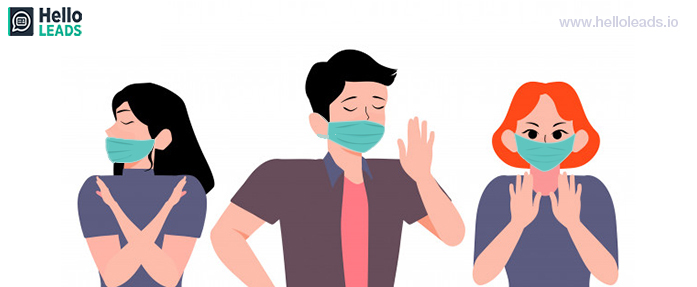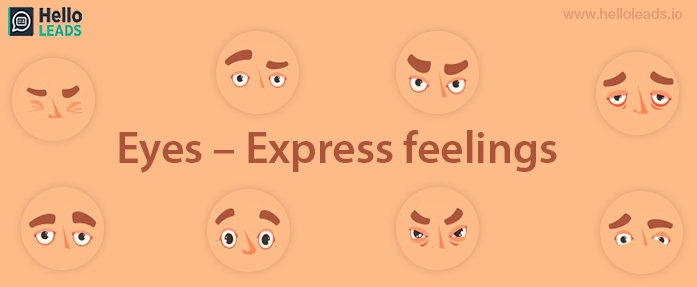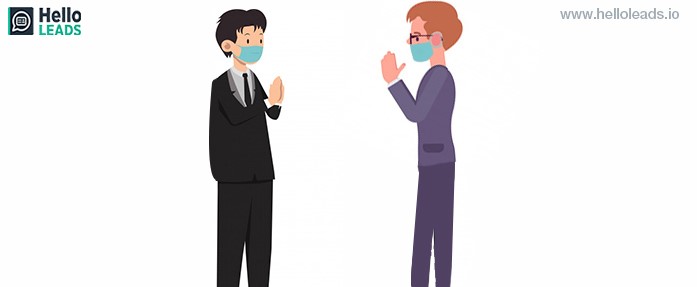
Wearing mask has become a new normal to protect against novel coronavirus i.e Covid 2019. Studies found that wearing face mask can slow down the spread of virus. It is highly recommended that people should wear mask in public places, especially when other social distancing measures are difficult. Researchers believe that mask are effective at stopping coronavirus and the contagious probability is lower when mask is worn by everyone in a group or gathering.

While mask protect lives, they also create social challenges.
As most of our interaction ends perfect with facial expressions, communicating with a mask hides the intensity of response and reaction, that one delivers.
The emotional state of a person can be understood by their facial expressions. They create social and emotional bond between peoples. Loss of such emotion among people is quite hard.
There are some emotions that are expressed solely on the lower part of the face. Smile, for example, is a positive emotion communicated throughout the world. Smiles have favourable influences among others and make one likable and more approachable. When we hide some part of the face, how do we communicate these emotions or how do we smile?!

Can you see the difference? Both are smiling!
Change in interaction
Though words are the common means of interaction, all the emotions are not conveyed by words. There are other behaviours that can express emotions more than the words do.
Covering our face with a mask is new and unusual. When we interact with a mask, our conversations are likely to be affected. In such a situation, people start looking for other non-verbal cues to interact and to understand what is conveyed. Non-verbal cues support better interaction, but it takes time.
Enhance emotions connected with body

Communicating emotions connected with our body can be the best way for understanding emotions of people. In general, when we interact with others, we unknowingly exchange wordless signals in most of our conversations. The gestures we make, the eye contact we have, tone in which we speak, all delivers the state of emotion we carry. All these actions and gestures has its own power to express various emotions. This can put people at ease and to enhance the interaction behind the mask.
All the cues may not exactly convey what is said. However, by learning how to read and use body language, we can enhance how we can understand and use cues, how to express what we really mean, connect better with others and build better and stronger relationships.
Top 4 ways to overcome communication issues
1.Use Eyes – Eyes do express feelings

Most of the people are good at conveying their emotions in the upper portion of the face. Eye contact is important in maintaining a conversation and for determining other person’s interest and response. The eyes and eyebrows communicate the emotions of a person well. The practice of looking and studying more about eye and its emotions can help us protect from misunderstanding and miscommunications.
2. Voice and tone can come to your help!
“It’s not just what you say, it’s how you say it”. Though we have masked our face, still our tone of voice behind the mask makes sense. While we speak, listener observes our words at the same time they read our voice. Voice convey emotions by how loud we speak, our tone is and we sound. They always express hope in one’s conversation.
3. Hand gestures can save the day!
Touchless greetings are welcome!
Hand gestures can be used for communicating messages. They are visible actions and are natural in humans. It helps others to understand conversations quicker and in an effective way. They change interaction with one another significantly. So, start thumb up for OK, greet with a WAVE, and more.

You can also try Indian way of saying Namaste, which is good for your body, mind and is touch less.
4. Try words that convey emotions
Express emotions through words. Words have the power of describing how one feels. By choosing words that convey emotions, builds a strong bond between people. It will be easier to understand the strength and weaknesses. Being able to understand and express emotions is a valuable tool to express hidden emotions.
Be emotionally aware!
In order to communicate with accurate nonverbal cues, we need to be aware of our emotions and how they influence us. We should have the ability to recognize not just our emotions but also of others, we need to understand the true feelings behind the cues shown. This is where emotional awareness comes in. Being emotionally aware enables us to read the unspoken messages and feelings of a person and creates a true and emotional relationship.

Emotions are strong feelings that affects behavioral change in body. By developing emotional awareness, practicing them we can gain control over how we should think and act.
Learning how to use other senses, body language too can lend hand in unmasking our emotions.
A mask is worn not to hide but to protect. Our entire body is not masked, they can express more emotions. By making more eye contacts and gestures, we can still understand the emotional state of others we are speaking with. Even with masks the communication can improve as we start understanding people not by words but by their expressions.
Behind the mask, an unseen smile can be still heard or seen!.
Share this blog :










